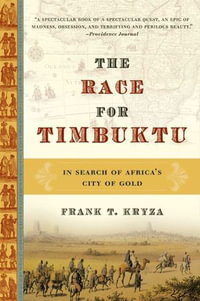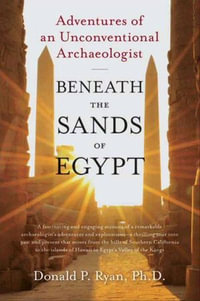
Egyptian Hieroglyphs in the Late Antique Imagination
By: Jennifer Taylor Westerfeld
eBook | 4 October 2019
At a Glance
256 Pages
eBook
RRP $94.99
$85.99
or 4 interest-free payments of $21.50 with
orInstant Digital Delivery to your Booktopia Reader App
Throughout the pharaonic period, hieroglyphs served both practical and aesthetic purposes. Carved on stelae, statues, and temple walls, hieroglyphic inscriptions were one of the most prominent and distinctive features of ancient Egyptian visual culture. For both the literate minority of Egyptians and the vast illiterate majority of the population, hieroglyphs possessed a potent symbolic value that went beyond their capacity to render language visible. For nearly three thousand years, the hieroglyphic script remained closely bound to indigenous notions of religious and cultural identity.
By the late antique period, literacy in hieroglyphs had been almost entirely lost. However, the monumental temples and tombs that marked the Egyptian landscape, together with the hieroglyphic inscriptions that adorned them, still stood as inescapable reminders that Christianity was a relatively new arrival to the ancient land of the pharaohs. In Egyptian Hieroglyphs in the Late Antique Imagination, Jennifer Westerfeld argues that depictions of hieroglyphic inscriptions in late antique Christian texts reflect the authors' attitudes toward Egypt's pharaonic past. Whether hieroglyphs were condemned as idolatrous images or valued as a source of mystical knowledge, control over the representation and interpretation of hieroglyphic texts constituted an important source of Christian authority.
Westerfeld examines the ways in which hieroglyphs are deployed in the works of Eusebius and Augustine, to debate biblical chronology; in Greek, Roman, and patristic sources, to claim that hieroglyphs encoded the mysteries of the Egyptian priesthood; and in a polemical sermon by the fifth-century monastic leader Shenoute of Atripe, to argue that hieroglyphs should be destroyed lest they promote a return to idolatry. She argues that, in the absence of any genuine understanding of hieroglyphic writing, late antique Christian authors were able to take this powerful symbol of Egyptian identity and manipulate it to serve their particular theological and ideological ends.
Industry Reviews
"Equally conversant with the texts in ancient Egyptian scripts—hieroglyphic, hieratic, and demotic—and the late antique sources, Jennifer Taylor Westerfeld offers a dynamic account of how late antique authors viewed ancient hieroglyphic script in an increasingly Christian world."—Jitse Dijkstra, University of Ottawa
on
List of Abbreviations
Note on Translations
Introduction. Confronting Pharaonic Egypt in Late Antiquity
Chapter 1. From Sign to Symbol in Roman Egypt
Chapter 2. Hieroglyphs, Deep History, and Biblical Chronology
Chapter 3. Encoding the Wisdom of Egypt
Chapter 4. Laws for Murdering Men's Souls
Chapter 5. Translating Hieroglyphs, Constructing Authority
Conclusion. Hieroglyphs in the Late Antique Imagination
Notes
Bibliography
Index Locorum
Subject Index
Acknowledgments
ISBN: 9780812296402
ISBN-10: 0812296400
Published: 4th October 2019
Format: ePUB
Language: English
Number of Pages: 256
Audience: College, Tertiary and University
Publisher: University of Pennsylvania Press, Inc.
You Can Find This eBook In

eBOOK
RRP $37.39
$29.99
OFF

eBOOK
RRP $27.49
$21.99
OFF

eBOOK
RRP $28.59
$22.99
OFF

eBOOK
RRP $28.59
$22.99
OFF

eBOOK
RRP $28.59
$22.99
OFF

eBOOK
$5.99

eBOOK
RRP $26.39
$21.99
OFF

eBOOK
$20.99

eBOOK
RRP $43.99
$35.99
OFF

eBOOK
RRP $17.59
$14.99
OFF

eBOOK
RRP $79.19
$71.99

eBOOK
RRP $34.09
$27.99
OFF

eBOOK
RRP $26.98
$25.99











